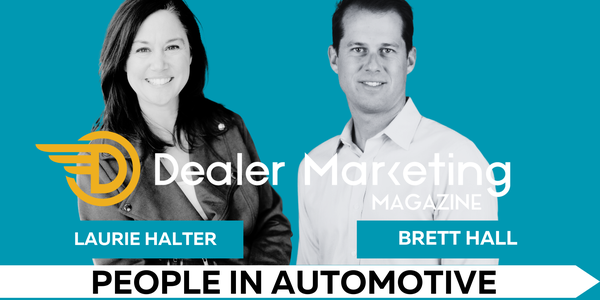5 Steps to Convert Phone Calls Into Appointments and Sales

There are only a handful of ways consumers will contact your dealership, and picking up the phone is at the top of a list.
Though call volume took a dive when consumers turned to the Internet in droves in the late 1990s and early 2000s — sending lead forms and emails instead — calling is back in vogue thanks largely to the proliferation of smartphones that make it easier for quick, click-to-talk phone calls. In 2014, ADP Digital reported calls outpaced Internet leads four to one, and in a recent survey of nationwide dealers the majority — 89% — reported incoming calls are still on the upswing.
This makes sense because of the increased accessibility to phone numbers in traditional search, on your website, and in your online advertising. In fact, eMarketer reported that OEMs and dealers spent $6 billion on digital marketing alone in 2013, and more than one-third was spent targeting shoppers using mobile devices. This is a huge spend that signifies that both OEMs and dealers expect dealerships’ phones to ring.
Yet when they do ring, often the sales staff isn’t equipped with the skills needed to convert that call into a showroom or service appointment. In fact, 60% of the dealers surveyed agreed that they are not confident they manage incoming calls effectively, and nearly one-third believe they lose one in five calls to a competitor. Our extensive analysis of incoming dealership phone calls indicates this number is way off — dealers are giving themselves too much credit. CallSource research into the monthly call-management results shows that for every 100 qualified sales calls a dealership receives, the average dealer typically only converts seven or eight into showroom appointments.
This means about 8% of calls are converted into showroom appointments, and of those eight appointments set, four customers probably come into the showroom and two ultimately buy a car from your dealership. In other words, there are a lot of car buyers working the phones and making their way to one of your competitors.
In contrast, top-performing dealers consistently secure 20 appointments or more out of every 100 inbound calls. This isn’t because they’ve written the best phone script, it’s because they are paying attention to the basics. A great example of a dealer who understands the importance of incoming phone calls is Brent Rogers, CMO of the award-winning Patrick Dealer Group in Chicago, Illinois, who said, “If we didn’t track and report every call in real time, we wouldn’t be able to operate effectively.”
In early 2013, when Rogers noticed a huge spike in incoming calls, he wanted to understand how well his sales team handled them. A 90-day review of call-to-appointment-setting ratios showed inbound leads were frequently mishandled and his stores were converting, on average, just 10% of sales calls into showroom appointments. This meant that out of 3,562 sales prospect calls, the Patrick sales team landed only 361 showroom appointments.
Rogers responded by putting a comprehensive call management platform in place, and has increased his call-to-appointment ratios by nearly 50% at each of his stores. Based on their average sales prospect volume, this improvement represents an additional 197 sales each year, or more than $400,000 in annual earnings. “We know phone leads are low-funnel customers that are closer to making a decision than Internet leads, and we now expect our sales team to convert 20% to 25% of phone leads into an in-store visit,” said Rogers. It’s clear that by once dealers understand the sheer volume of sales being missed in every department of their dealership, they begin to realize the critical importance of managing their phones and giving their sales staff the training they need to be successful.
If you can convert 10 more calls a week into appointments, they would likely result in an additional two or three cars sold, or about 10 additional sales per month. This means you can add approximately $22,000 to your bottom line (10 times $2,200 profit per car). That’s not something you should be ignoring. The following are the five keys to phone success:
- Prioritize call management. Refuse to accept the status quo — “we’ve always been bad on the phones, so we’ll always be bad on the phones” — and treat inbound phone leads as the last and most critical step in a very expensive marketing process.
- Create a structured call process. Whether inbound phone leads flow through a BDC, the sales floor, or via another process, top-performing dealers have a process in place for the opening of the call, building the value proposition during the call, and successful completion of the call.
- Measure phone leads. Understand the type of lead (sales, service, or parts), who handled it, and, of course, the results. This means having call-management reporting solutions in place that measure phone-lead opportunity types, and the outcomes associated with each of them.
- Accountability. Given the volume of phone leads, the responsibility to “inspect what you expect” quickly gets lost. An effective call-management system will automate the assignment of who took the call, making accountability easier and more efficient.
- Consistency. Almost all salespeople can be effective on the phone, but without structure and support to reinforce good call-management behaviors, it’s easy for them to stop managing sales opportunities and, instead, simply “answer the phone.” Keep the process consistent and effective.
By using these five techniques, your dealership can convert substantially more calls into appointments and sales. David Greene is executive vice president of sales for CallSource Automotive, a company focused on helping dealers make each and every inbound call matter. Greene’s early experience with Autoweb.com, one of the first online car-buying companies, and eBay Motors gave him extensive experience into positive disruption in the automotive sales process.
Tags:
authored by
David Greene
Get Curated Insights
Content worth the click
Related Articles












